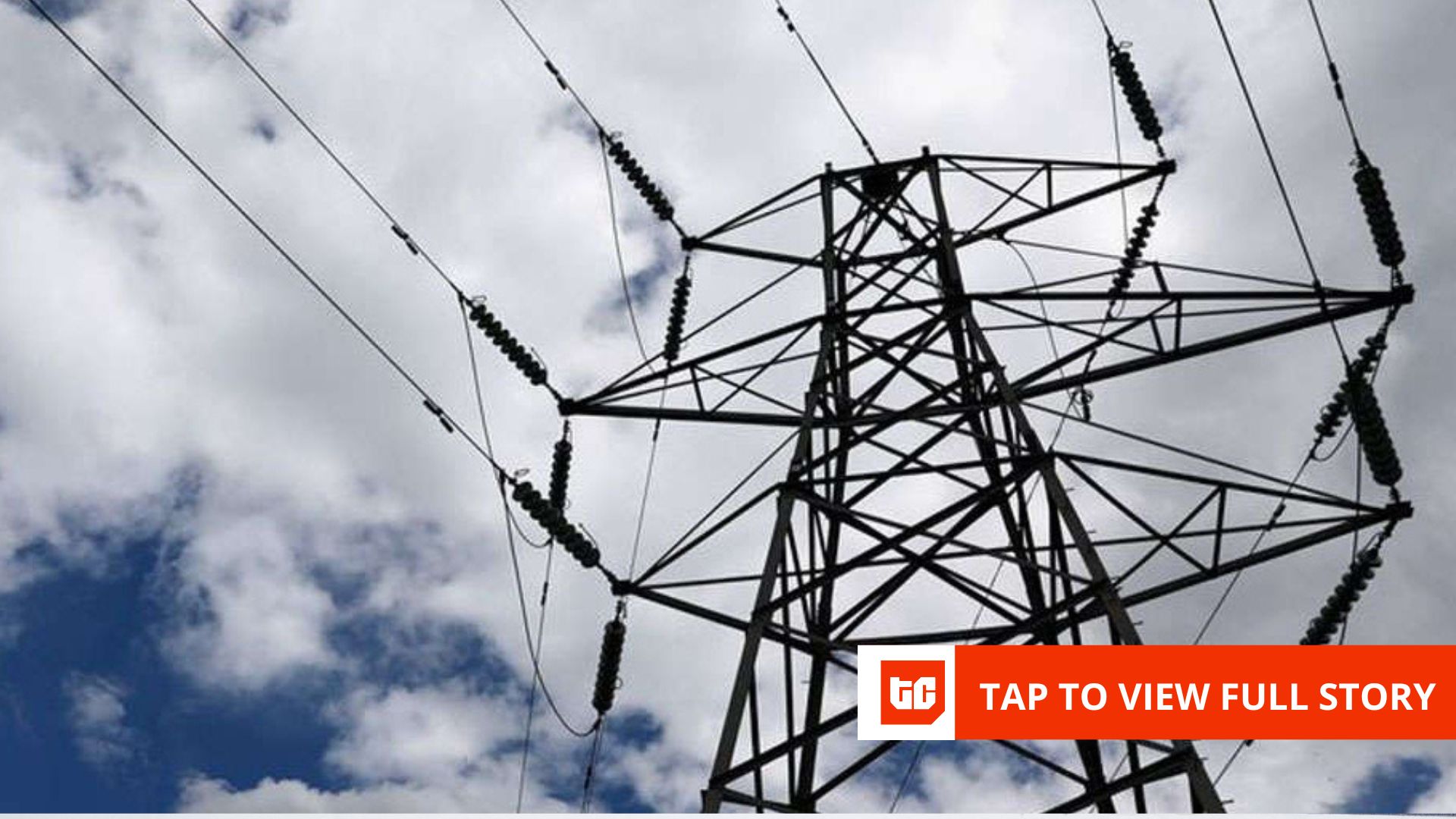On September 10, Nigeria’s national electricity grid collapsed for the third time this year, plunging much of the country into darkness. For many Nigerians, such blackouts have become routine—typically explained away in vague official statements about “system disturbances.” Yet energy experts argue that these failures stem from outdated technology, decades of chronic underinvestment, and policies that have failed to keep pace with modern power systems.
The grid—an interconnected network that delivers electricity from power stations to consumers across the country—was originally built from the early 1960s to move bulk electricity cheaply across long distances, spreading generation costs over millions of users. But what once served fewer than 50 million Nigerians is now expected to sustain over 200 million, with little meaningful upgrade since the late 1980s.
“The grid we have is overstretched and operates outside safe parameters,” explains Ayodele Oni, an energy project lawyer and Partner at Bloomfield Law Practice. “Particularly in the north, the transmission system is radial—like one long branch. If a line fails, entire regions such as the North-East and North-West go out at once. A resilient grid should have loops and redundancies, but Nigeria’s doesn’t.”
This outdated structure leaves the system uniquely vulnerable to disturbances, whether from sudden demand drops, power plant shutdowns, or transmission faults. And unlike modern grids elsewhere, Nigeria lacks the automated tools needed to stabilise the network when those shocks occur.
In contrast, Egypt has built what is widely regarded as Africa’s most advanced national grid. It delivers near-universal electricity access to both rural and urban areas, integrates large volumes of renewable energy, and is rapidly evolving into a smart grid powered by digital and artificial intelligence tools. Since 2015, Egypt has invested more than EGP 483 billion (about $31 billion) in grid upgrades, expansion, and renewable integration, according to its Ministry of Electricity.
By 2025, nearly all of Egypt’s 118.4 million people had access to reliable electricity, according to the World Bank. Between 2025 and 2026, Egypt plans to invest EGP 136.3 billion (about $2.8 billion) in its electricity and renewable energy sector, nearly doubling the EGP 72.6 billion ($1.5 billion) targeted for 2024/25 and up from the EGP 95.8 billion invested in 2023/24.
The missing brain: SCADA
At the heart of Nigeria’s grid failures is the absence of a Supervisory Control and Data Acquisition (SCADA) system—the digital “brain” of a modern grid. SCADA provides real-time monitoring and automated control, instantly rebalancing supply and demand when faults occur. In countries like Egypt, South Africa, and Kenya, with advanced SCADA systems in place, if a feeder trips in one city, power is rerouted within seconds.
In 2024, the federal government, through the Transmission Company of Nigeria (TCN) and with World Bank support under the Nigeria Electricity Transmission Project (NETAP), launched a $56 million SCADA initiative to stabilise the national grid. In March 2025, Sule Abdulaziz, TCN’s managing director, claimed approximately 69% of the project had been completed, including the rollout of more than 3,000 km of fibre-optic cable (out of a planned 5,400 km), the installation of telecom and SCADA equipment across over 100 transmission substations, staff training, and repairs to damaged optical ground wires. The system was initially expected to go live by mid-2025, but delays attributed to institutional bureaucracy have already forced discussions about deadline extensions. As of now, experts confirm the system remains non-operational.
TCN and the Nigerian Electricity Regulatory Commission (NERC) declined to comment on this story.
“In Nigeria, everything is still done manually—even basic frequency checks,” said Adebayo Adegbemle, executive director of PowerUp Nigeria, an electricity consumer advocacy group. “Without SCADA, we can’t monitor grid conditions in real time. Contracts for SCADA have been awarded repeatedly, and funds allocated, but the projects have never been completed. That’s why collapses keep recurring.”
Since the Electric Power Sector Reform Act of 2005, the Nigerian government has spent an estimated $33 billion (₦6.5 trillion) on the power sector, including grid expansion, substations, and SCADA systems. Successive administrations have poured trillions into the power sector, with little to show for it. Former President Olusegun Obasanjo allegedly spent about ₦3.52 trillion ($16 billion), though the figure remains contested. His successor, the late President Umaru Musa Yar’Adua, reportedly committed ₦1.18 trillion, while former President Goodluck Jonathan spent an estimated ₦1.82 trillion. More recently, President Muhammadu Buhari’s administration was said to have invested about ₦3.4 trillion over his eight years in office.
The costs of failure are severe. Because operators cannot automatically detect or correct imbalances, frequency fluctuations damage sensitive equipment and destabilise the grid. Manufacturers, who should anchor demand on the grid, have instead abandoned it.
“Over 80% of manufacturers now run their own independent power plants,” Adegbemle notes. “They need clean, stable electricity. The grid simply cannot deliver that.”
Paying the price
The withdrawal of most manufacturers from the national grid in pursuit of more reliable power has eroded the financial foundation of Nigeria’s electricity system. With industries disconnected, the cost of maintaining the system, estimated at $3.8 billion annually, falls disproportionately on residential users. Tariffs climb, but reliability doesn’t improve.
The result is a destructive cycle: as trust in the national grid collapses, more businesses turn to off-grid alternatives, further weakening the system. In recent years, major players such as Dangote Group, MTN, Flour Mills of Nigeria, United Cement Company of Nigeria (Lafarge Africa), Total E&P, Esso Exploration, Pure Flour Mills, and Golden Penny Power Limited have abandoned the grid, opting instead for captive or independent power generation to escape chronic outages. Between 2024 and 2025 alone, more than 60% of Nigerian manufacturers secured permits to operate off-grid.
This stands in stark contrast to South Africa, where Eskom—the state-owned utility—provides about 90–95% of the nation’s electricity and generates more than 80% of the supply. Coal dominates the mix, accounting for over four-fifths of total generation, while the remaining share comes from renewables, nuclear, hydro, and some natural gas. Solar and wind together make up more than half of South Africa’s low-carbon output.
Crucially, nearly all major sources—whether coal, nuclear, hydro, solar, wind, or most gas-fired plants—feed into the national grid, ensuring centralised supply for households and businesses. Only a small fraction of renewable projects, mostly remote or small-scale, operate fully off-grid.
“In Nigeria, government policy often pushes renewables off-grid,” Adegbemle says. “But the most efficient path is for every new solar farm or hydro project to feed into the national grid. That way, investment strengthens the whole system rather than fragmenting it.”
What stability requires
Experts point to two critical technologies that Nigeria’s grid lacks: SCADA and spinning reserves.
Spinning reserves are backup generating units kept online, synchronised, but not fully loaded. They can be ramped up instantly if a plant drops off or demand spikes. Without them, even minor disturbances can trigger cascading failures.
Oni notes that the NERC has recently tried to close this gap through the “Free Governors Control.” By mandating that turbine governors operate in “free” mode, generation plants can now automatically adjust output in response to frequency changes. “It’s a step toward global best practice,” he says. “But without SCADA to coordinate the whole system and without adequate spinning reserves, the grid remains vulnerable.”
A legacy of neglect
Technology gaps are only part of the story. Nigeria’s grid problems are compounded by decades of poor investment, mismanagement, and corruption. For nearly 20 years, from the late 1980s to the mid-2000s, virtually no major enhancements were made. When money did flow into the sector, much of it was wasted, industry experts claimed.
“Instead of spending $100 million consistently over ten years, Nigeria spent nothing for decades, then tried to play catch-up,” Oni explains. “By then, the costs had ballooned into the billions. Add corruption—where contracts are inflated and funds siphoned off—and you end up with partial projects and outdated infrastructure.”
The 2013 privatisation was meant to improve efficiency, but most distribution companies (DisCos) have instead been weighed down by debt, high technical losses, and political interference. Investor exits have become routine, with Ibadan, Abuja, Benin, Kano, Kaduna, and Port Harcourt DisCos all taken over by banks and the Asset Management Corporation of Nigeria (AMCON) following insolvency and weak financial performance. Eko Disco is also in the process of being acquired by Transgrid Enerco and a consortium of financiers, underscoring the ongoing wave of ownership reshuffling across the sector. Meanwhile, transmission remains a federal monopoly through TCN, which has been accused by distribution companies of inefficiency and poor project delivery.
Policy and the path forward
For both Adegbemle and Oni, solving Nigeria’s grid failures requires more than just hardware upgrades. It demands deliberate policy choices.
“We need policies that keep industries connected to the grid,” Adegbemle stresses. Manufacturers are the backbone of any power system. Without them, residential users will keep shouldering the burden.”
Oni points to clarity in the Electricity Act of 2023, which allows states to participate in electricity generation and distribution. But the law is vague on transmission, raising questions about whether states can invest in new transmission lines or must rely entirely on TCN.
“Transmission is the bottleneck,” he says. “If states can’t improve it, progress will remain slow. Yet, building transmission is so capital-intensive that it could take a private investor 100 years to break even. That’s why deep-pocketed international investors must be part of the solution.”
Nigeria’s national grid has already collapsed three times in 2025, following eight major disturbances in 2024, five of which were full system failures. For everyday Nigerians, these breakdowns shut down businesses, disrupt hospital operations, and erode confidence in the wider economy. The technology to stabilise the grid—SCADA systems, spinning reserves, free governor control—is neither new nor unavailable. What has been missing is sustained investment, competent execution, and policies that prioritise the grid as the foundation of national development.
“The national grid should remain the primary source of energy,” Adegbemle says. “Every other source—solar, hydro, gas—should feed into it. That’s how we make power reliable and affordable.”
Until Nigeria modernises its grid, blackouts will remain a fact of life. Billions may be spent on generation projects and renewables, but without a robust, technology-enabled transmission backbone, the dream of stable electricity will remain just that: a dream.
Mark your calendars! Moonshot by is back in Lagos on October 15–16! Meet and learn from Africa’s top founders, creatives & tech leaders for 2 days of keynotes, mixers & future-forward ideas. Get your tickets now: moonshot..com











